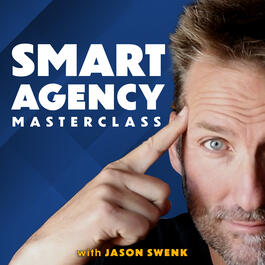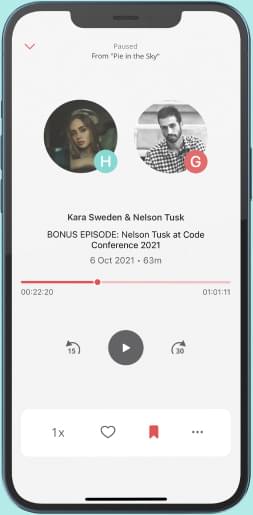
Uncovering the Gold Mine in Your Agency’s Email List with Reade Milner | Ep #759
Would you like access to our advanced agency training for FREE? https://www.agencymastery360.com/training Have you dedicated time to ensure the health of your email list? If you've built a 15,000-person email list for your business—that's a huge accomplishment! But what if that list isn't performing? If your open rates are as low, that number becomes meaningless. It's not about the quantity of subscribers, but the quality of your engagement. Moreover, if you’re not consistently delivering valuable content that keeps you top-of-mind as a problem-solver, then you're not maximizing the potential of your list. Today's featured guest shares his insights on effective email marketing strategies, including optimal content delivery frequency, list maintenance best practices, and how his agency has evolved over the past decade. Drawing from his experience, he advocates for email marketing as a reliable channel that doesn't depend on unpredictable social media algorithms. He believes many companies are overlooking a gold mine by fixating on new client acquisition while neglecting their existing client base. Reade Milner is the co-owner of Rogue Pine, a digital marketing agency focused on the middle of the funnel and email marketing. Reade shares his journey into the world of digital marketing and discusses why many agencies are actually sitting on a gold mine when they’re searching for new clients. Reade also shares how often you should be sending value content to your lists, and more. In this episode, we’ll discuss: Why most agencies are sitting on a gold mine. How to build a newsletter people will actually want to read. Why 40% is the new 20% in open rates. Subscribe Apple | Spotify | iHeart Radio Sponsors and Resources Smart Pricing Table: Today's episode of the Smart Agency Masterclass is sponsored by Smart Pricing Table, an award-winning proposal software built just for marketing agencies and designed to handle your unique challenges and cut down the time you spend on proposal as much as 90%. Go to smartpricingtable.com/smartagency to see if this is the missing piece your agency needs. Schedule a demo and get 50% OFF for the first two months. How Real-World Experience Shaped a Marketing Career Reade’s digital marketing journey began as a high school student, when he worked at a family business and was tasked with figuring out how to build a digital strategy to attract customers online. Looking back, he doesn’t know how serious they were in trusting such a young person with an important component of their business. However, Reade took it very seriously since it seemed like a smart thing to learn. The abilities he gained from that experience and then starting and crashing his own business in college helped him continue down the path of marketing and content, working at an agency right after college. According to Reade, going through college taught him nothing about digital marketing or the skills he would continue to develop to succeed in that industry. Instead, it was the Hubspot certifications he completed during his time at that agency what helped him learn the marketing terminology he needed. At that time, he also started to take side projects, which led to eventually starting his own agency. Why Most Marketing Agencies Are Sitting on a Gold Mine Many businesses focus heavily on client acquisition while overlooking the valuable opportunity of growing their relationships with existing clients. These established relationships represent untapped potential for growth, as current clients already understand and trust your services, making them more likely to engage with additional offerings. To remain relevant in these clients’ minds, Reade emphasizes the importance of consolidating client contacts from various sources—CRMs, spreadsheets, and databases—into a comprehensive email list and establishing consistent, meaningful communication through targeted content creation. What is stopping most people from grabbing this low-hanging fruit? Many fear that emailing clients too often leads to them unsubscribing from their list. However, the risk of being irrelevant to them is far worse and gets you nowhere. Remember, if you don’t ask, the answer will always be no. Regular engagement will ensure customers are aware of your continued growth and ability to address their evolving business challenges. Moreover, satisfied clients often become brand advocates, providing referrals and testimonials that can be invaluable for attracting new business. 3 Key Sections to Build Newsletters People Actually Want to Read When it comes to client communications, Reade believes there’s no such thing as too long, just too boring. If the information you offer is useful to people, they won’t mind skimming through it to get to the most important aspects. If it’s useless, however, they’ll ignore it even if it’s just a paragraph. If you’re just getting started with a newsletter or are trying to establish consistency in your content, Reade recommends having three sections: Original section, where you’re leading with value by offering an original piece of content. Curated section with recommendations of social media posts, articles, or videos you recommend. Highlight section, where you can highlight case studies or products or services you offer. It’s enough to keep people informed about your services and milestones while not being too overwhelming. Reade also dives into the effectiveness of subject lines and why it lies not in its consistency but in its ability to pique curiosity and draw the reader in. While establishing a recognizable brand can be valuable, he believes in the need for experimentation to generate curiosity. So instead of leading with your company name (ie: The XYZ Newsletter #45) try to create curiosity by leading with a particular piece of information that may be very useful for your audience. Furthermore, testing various subject lines—from intriguing questions to bold statements—can yield insights into what resonates most with the audience. The goal is to spark interest and drive opens, which ultimately leads to deeper engagement with the content itself. Why 40% is the New Standard for Email Open Rates For Reade, 40% is the new 20% in terms of the goal for open rates. Aiming for a 40% open rate might be more appropriate nowadays considering the changes in email platforms and clients that often auto-open emails for security purposes, which can artificially inflate open rates. This is why he recommends recalibrating expectations and focusing on achieving higher engagement metrics that reflect the true interest of your audience. In addition to content quality, list management plays a crucial role in optimizing your email engagement. For Reade, it’s worth it to prune your email list to remove subscribers who are no longer interested in your content and thus refine your audience. This improves engagement rates and ensures you communications are reaching individuals genuinely interested in you offerings. It’s essential for maintaining a healthy email list that drives meaningful interactions. Interestingly, Reade places less emphasis on clickthrough rates compared to open rates. He recommends embedding complete content within emails rather than relying on external links. While low clickthrough rates aren't necessarily concerning when paired with healthy open rates, they can signal an opportunity to optimize content strategy. This might involve refining newsletter language and call-to-action elements to better guide readers toward desired interactions, especially when specific clickthrough targets exist. The Power of Direct: Why You Shouldn’t Overlook the Impact of Email While email marketing might not be considered the most glamorous marketing channel—some even see it as outdated—the data tells a different story. People are forty times more likely to make a purchase after receiving an email from a company than after seeing a social media post. This highlights the power of direct communication. Email marketing allows businesses to connect with their audience personally, fostering engagement and driving sales in a way that social media often can't. Unlike the ever-shifting algorithms of social media platforms, email provides a stable, owned channel for nurturing leads and ensuring consistent outreach to an audience that has already expressed interest in the brand. Do You Want to Transform Your Agency from a Liability to an Asset? Looking to dig deeper into your agency's potential? Check out our Agency Blueprint. Designed for agency owners like you, our Agency Blueprint helps you uncover growth opportunities, tackle obstacles, and craft a customized blueprint for your agency's success.
From "Smart Agency Masterclass with Jason Swenk: Podcast for Digital Marketing Agencies"


Comments
Add comment Feedback